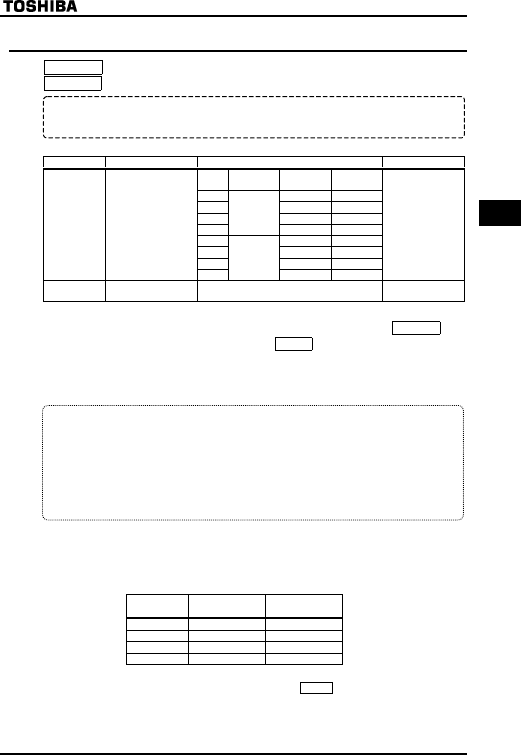
E6581090
E-9
5
5.10 Setting the electronic thermal
QNO
: Electronic thermal protection characteristics
VJT
: Motor thermal protection level 1 (%)
■Parameter setting
Title Function Adjustment range Default setting
Setting
value
Overload
protection
Overload
stall
0 ○×
1 ○○
2 ××
3
Standard
motor
×○
4 ○×
5 ○○
6 ××
QNO
Electronic thermal
protection
characteristics
7
VF motor
(special
motor)
×○
0
VJT
Motor thermal
protection level 1 (%)
30~100 (%)
100
★○ : valid, × : invalid
1) Setting the electronic thermal protection characteristics selection QNO and
motor electronic thermal protection level 1 VJT
The electronic thermal protection characteristics selection
QNO
is used to enable or disable the
motor overload trip function (
QN
) and the overload stall function.
While the inverter overload trip (
QN
) will be in constant detect operation, the motor overload trip
(
QN
) can be selected using the parameter
QNO
.
[Using standard motors (other than motors intended for use with inverters)]
When a motor is used in the lower frequency range than the rated frequency, that will decrease the
cooling effects for the motor. This speeds up the start of overload detection operations when a
standard motor is used in order to prevent overheating.
■Setting of electronic thermal protection characteristics selection QNO
Setting
value
Overload
protection
Overload
stall
○×
○○
××
×○
○ : valid, × : invalid
■Setting of motor electronic thermal protection level 1 VJT
If the capacity of the motor is smaller than the capacity of the inverter, or the rated current of the
motor is smaller than the rated current of the inverter, adjust the electronic thermal protection level 1
VJT
so that it fits the motor's rated current.
• Function
Selects the electronic thermal protection characteristics that fit with the ratings and
characteristics of the motor.
Explanation of terms
Overload stall : When the inverter detects an overload, this function automatically lowers the
output frequency before the motor overload trip QN is activated. The soft
stall function allows the drive to run with balanced load current frequency
without a trip. This is an optimum function for equipment such as fans,
pumps and blowers with variable torque characteristics that the load current
decreases as the operating speed decreases.
Note: Do not use the overload stall function with loads having constant torque characteristics
(such as conveyor belts in which load current is fixed with no relation to speed).


















